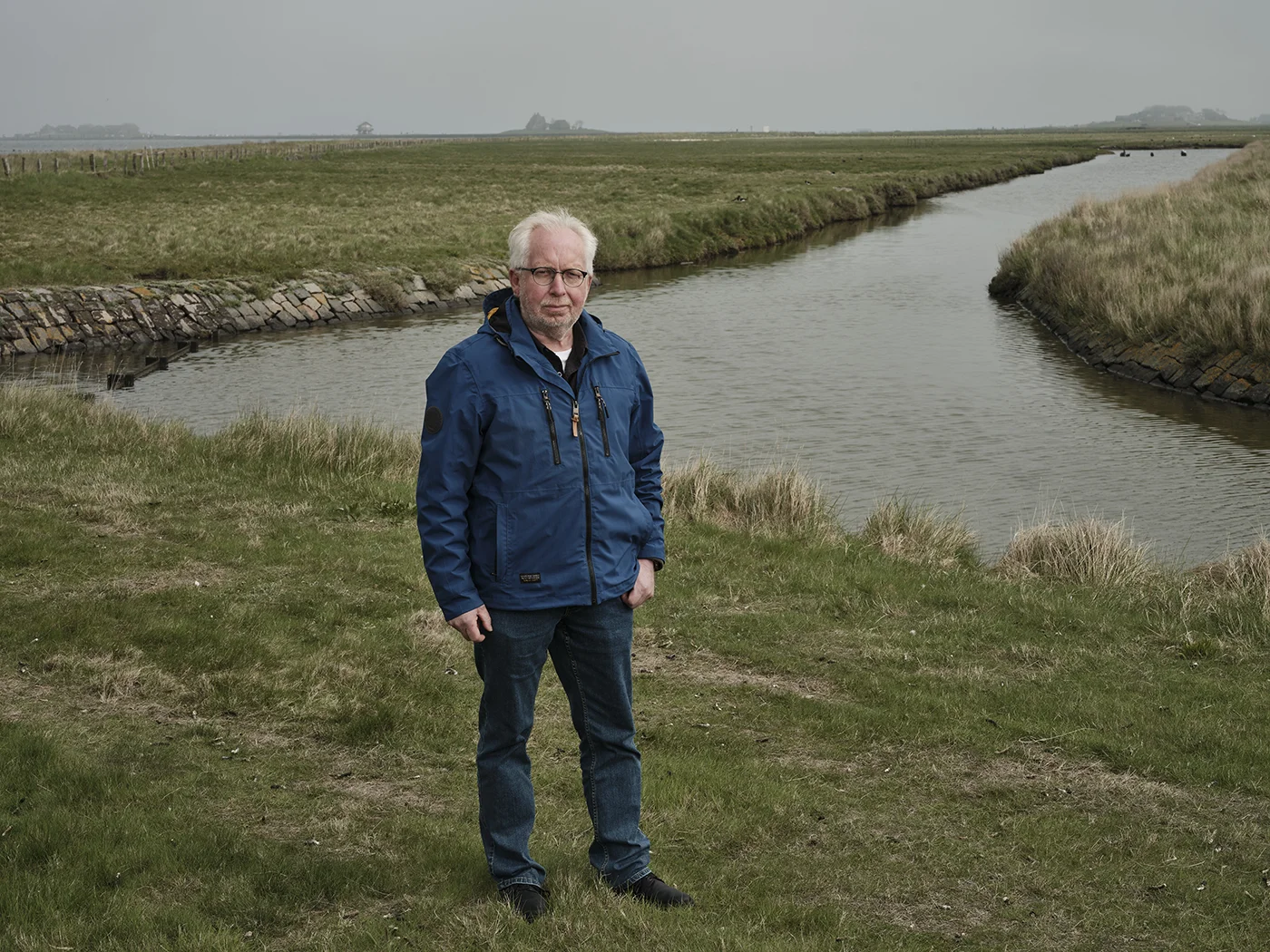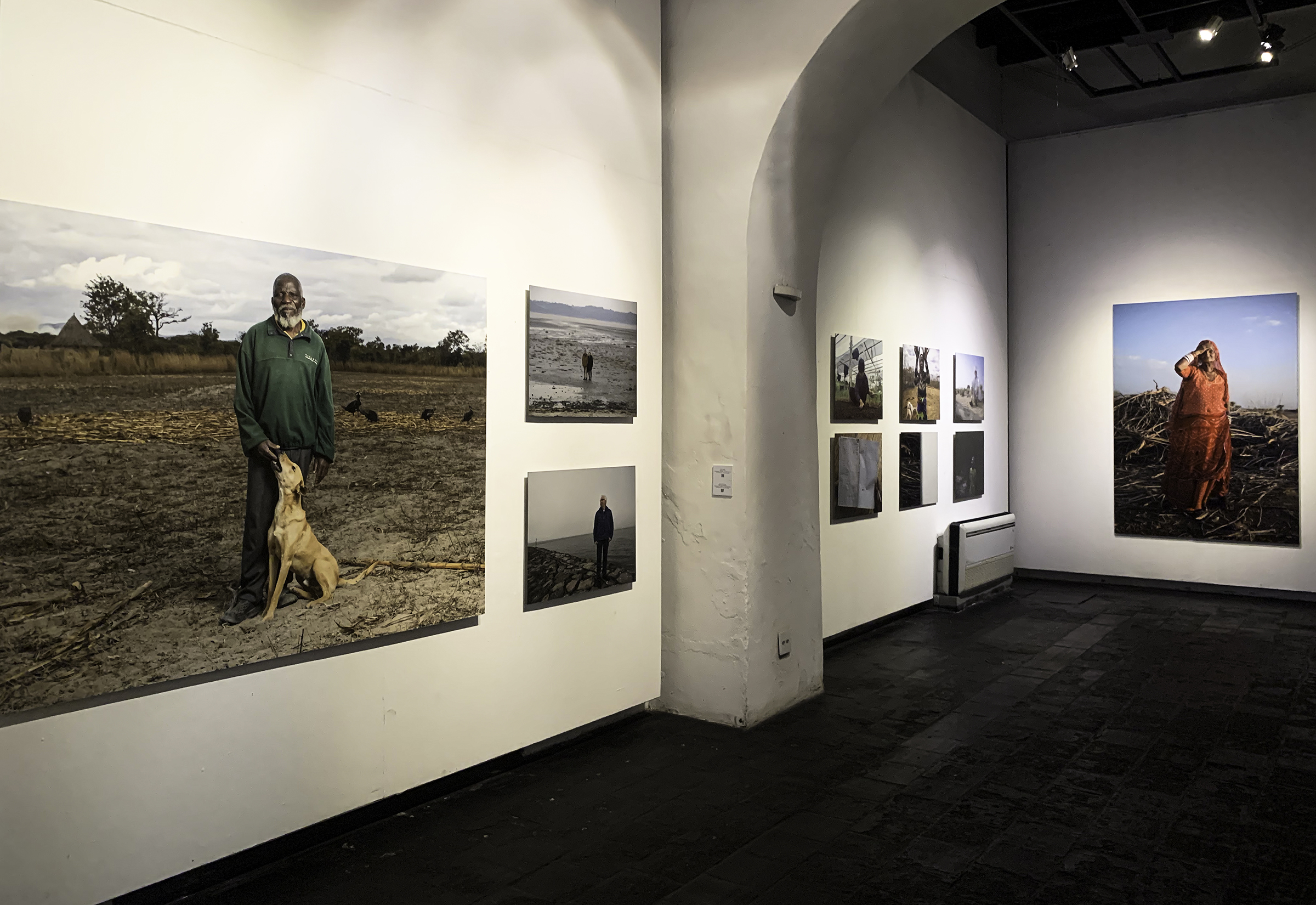(Portugese translation below / Traduçãoem português abaixo)
Hartmut Del Missier, a descendant of Italians that moved to Germany to work in the building of dikes, was born and lives on German Hallig Hooge, a one-and-a-half hours shuttle by ferry from the coast of Schleswig-Holstein in northern Germany. Halligen are small islands without dikes in the North sea's Wadden Sea in the district of Nordfriesland.
The 64-year old works as a tourist relation manager on the island that is a popular spot for bird watchers and tourists. The Halligen draw birds on their migratory routes roughly twenty thousand greylag geese visit Hooge every year for their rich soil, as they are regularly inundated by floods. That is normal for the inhabitants and no reason for concern as their settlements are secured by „Warften", dikes around the housing complexes. But irregularly even the nine settlements on the 2.23 sq miles island, which levels only 5 meters above the normal sea level, are completely swallowed by severe storms. This “Land unter” occurs around 10 times per year and with climate change the frequency and severity of those incidents rises.
Hartmut Del Missier, descendente deitalianos que migraram para a Alemanha para trabalhar na construçãode diques, nasceu e vive em Hallig Hooge, uma das “Halligen”alemãs – pequenas ilhas sem diques, localizadas no Mar de Wadden,distrito de Nordfriesland. O acesso é feito em uma hora e meia debalsa a partir da costa.
Aos 64 anos, Hartmut trabalha comogestor de relações turísticas na ilha, conhecida por atrairobservadores de aves e visitantes. Todos os anos, cerca de 20 milgansos-cinzentos passam por Hooge em suas rotas migratórias,aproveitando o solo fértil, regularmente inundado pelas marés. Paraos habitantes, essas inundações são parte da rotina, já que suascasas ficam protegidas por “Warften” — elevações artificiaiscercadas por diques. No entanto, tempestades mais severas podemengolir totalmente as nove vilas da ilha de apenas 5 km², situada a5 metros acima do nível do mar. Esse fenômeno, chamado “Landunter”, ocorre cerca de 10 vezes por ano — e com as mudançasclimáticas, sua frequência e intensidade estão aumentando.
What has climate change done here?
"I personally think that the storms have increased. In the past, they occurred during the day; nowadays, they happen more at night. The waves have become higher. In the meantime, the dikes have been raised continuously. The major storm surge was in 2013, when the last dike raising had just been completed. In 2008. And now they are raising the dikes again. The dikes were raised from 1962 to 1969, then again from around 1994 to 2008. And now, after the storm in 2013, they're doing it again. You can see that the sea level is continuing to rise. You can feel it. And we don't know what the future holds for us in 30 or 40 years. We don't know."
"Eu, pessoalmente, acho que astempestades aumentaram. No passado, elas aconteciam de dia; hoje,mais à noite. As ondas ficaram mais altas. Os diques vêm sendoelevados continuamente. A grande tempestade foi em 2013, pouco depoisda última elevação, concluída em 2008. Agora estão novamentereforçando os diques. Eles já haviam sido elevados entre 1962 e1969, depois entre 1994 e 2008. E agora, após 2013, outra vez. Vocêpercebe que o nível do mar segue subindo. Dá para sentir isso. Enão sabemos o que nos aguarda daqui a 30 ou 40 anos. Não sabemos."
What do you think world leaders have to do now to stop things from getting worse and to help us adapt?
"As I said, 2013 was a major storm surge; the dikes had just been reinforced, and now all the dikes on the ten Halligs need to be raised. But the planning process is moving too slowly. The dike we are sitting on now took four years to build, and actually, the average sea level doesn't stop; it can rise every day, and high floods can come at any time. We should actually raise a dike every year. Climate change doesn't wait. And if they continue to raise the dikes at this pace, they will be finished with the dike raises by 2050. So, urgency is required."
"Como disse, 2013 foi uma grandetempestade; os diques tinham acabado de ser reforçados, e agoratodos os diques das dez Halligen precisam ser elevados novamente. Maso processo de planejamento é lento demais. O dique em que estamossentados levou quatro anos para ser construído — mas o mar nãoespera, o nível sobe todos os dias e enchentes podem vir a qualquermomento. Deveríamos erguer um dique novo a cada ano. As mudançasclimáticas não param. Se continuarem nesse ritmo, só terminarãoem 2050. É preciso agir com urgência."















































.svg)






